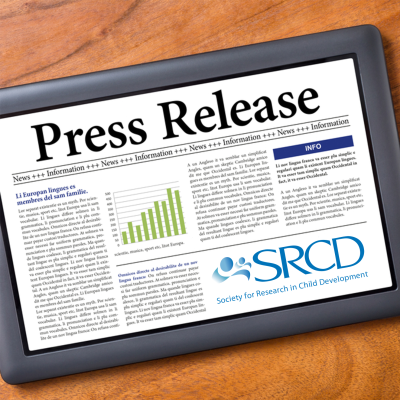Community Service Programs That Include Reflection Found To Be More Beneficial To Youth
PRESS RELEASE / CHILD DEVELOPMENT: Embargoed for Release on July 24, 2014
Adolescents in some countries and U.S. states are required to perform community service, and many national and nongovernmental agencies promote such service. A new study has found that while community service has broad benefits for adolescents, it is particularly effective when the activities are accompanied by reflection and discussion.
The study, by researchers at Utrecht University and Rutgers University, appears in the journal Child Development.
Researchers used meta-analysis to assess findings from 49 studies from around the world that were conducted from 1980 to 2012 and involved 24,477 participants from ages 12 to 20, focusing on identifying how reflection contributed to community service. They defined reflection as guided thinking, or structured, deliberative thinking, about the community service activities and related academic, social, civic, and moral topics. They also examined how the effect of community service was influenced by characteristics of the community service and of the adolescents who took part.
The study found that community service had a positive effect on all examined outcomes: academic (e.g., school grades and school motivation), personal (e.g., self-esteem and identity), social (e.g., tolerance and social skills), and civic (e.g., civic responsibility and volunteering). In addition, structured reflection was a crucial part of the overall effect of community service. Community service that included reflection had a substantial, beneficial effect, while community service without reflection yielded a negligible effect.
“This indicates that it’s important for community service activities to be complemented by opportunities for reflection,” note A. J. van Goethem, a post-doctoral researcher at the Research Institute of Child Development and Education at Utrecht University of Amsterdam, and Daniel Hart, professor of psychology and childhood studies at Rutgers University, who participated in the study.
The study also found that community service was particularly effective when reflection was integrated with the school curriculum (e.g., as part of a class on social studies). Connecting community service with an academic course may help youth understand the meaning of their service experiences.
Furthermore, the positive effect of community service was stronger when service was performed more often; in the study, youth performed on average 65 hours of community service over 28 weeks. It was also stronger when reflection occurred more frequently; in the study, youth reflected 24 times in the 28 weeks (e.g., one time of reflection was equivalent to one classroom session in which students discussed community service). And the benefits were greater among older adolescents (e.g., teens in their last year of high school). These findings can inform educators on how to develop and implement effective community service programs for teens.
In 2012, 22 percent of U.S. millennials (youth born between 1982 and 2001), then between 11 and 20 years old, had performed unpaid, organized community service activities in the previous year, according to the Corporation for National and Community Service.
The study was supported by Utrecht University in the Netherlands.
###
Summarized from Child Development, The Role of Reflection in the Effects of Community Service on Adolescent Development: A Meta-Analysis by van Goethem, AAJ, van Hoof, A, Orobio de Castro, B, van Aken, MAG (Utrecht University), and Hart, D (Rutgers University). Copyright 2014 The Society for Research in Child Development, Inc. All rights reserved.


